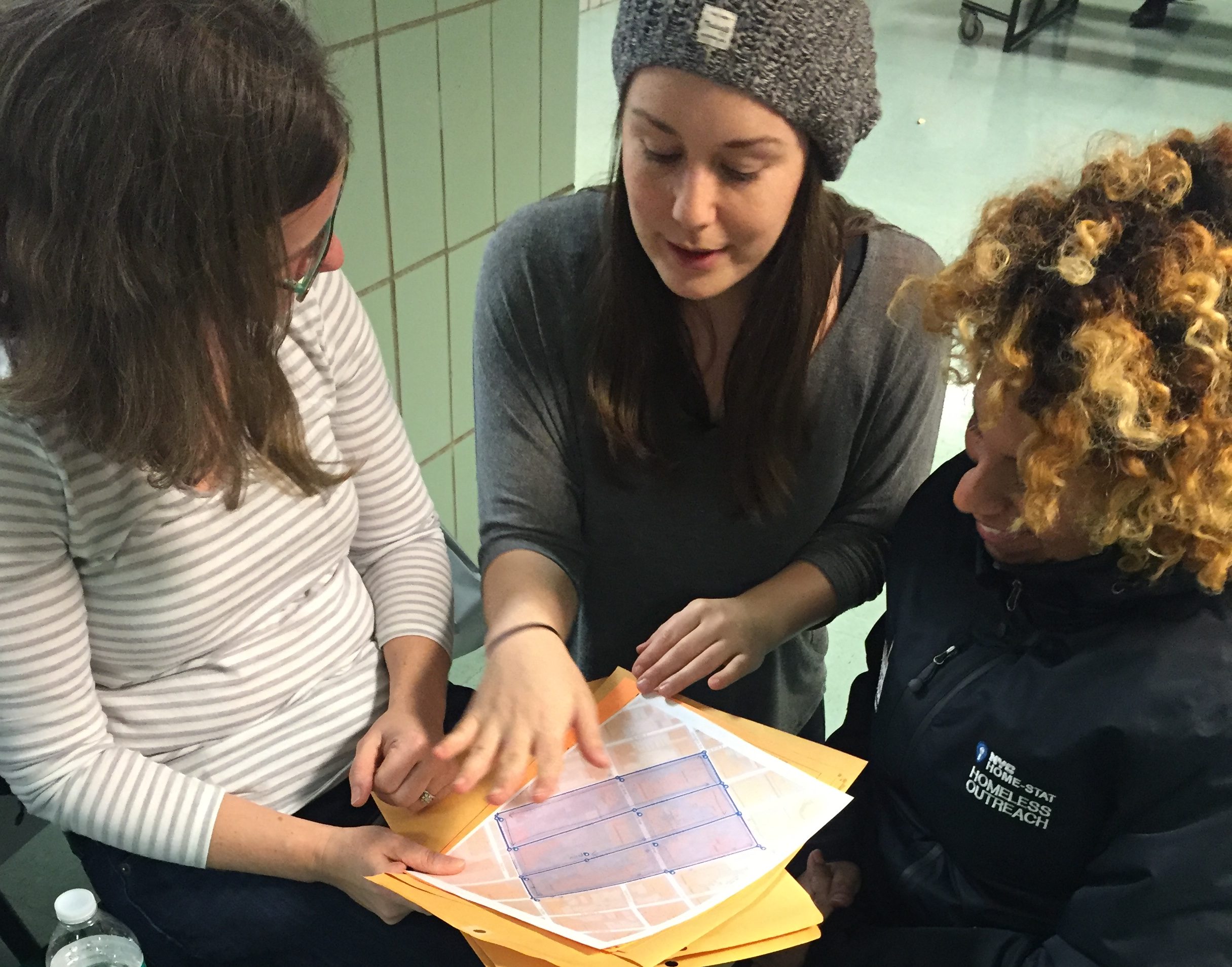Blog

HOPE Count 2018: Part I
February 8, 2018On January 22nd, CUCS participated in the City’s annual survey of the homeless population in New York City. The Homeless Outreach Population Estimate (HOPE) count is conducted by the Department of Homeless Services to estimate the number of people living on the streets in all five boroughs of New York City. We sat down with CUCS’ Erica Strang, Director of the Manhattan Outreach Consortium, to discuss the count and what it means for CUCS as the lead agency of street outreach in Manhattan.
When did the City start conducting the HOPE count and why?
The first HOPE count took place in 2005. The purpose was and still is to gain an understanding of everyone on the street and estimate the number of homeless individuals living on the streets of New York City. We are really looking for the people who are out there in the middle of winter and not going into shelter.
When did you start participating in the HOPE count?
I participated on my own once and then consistently since 2007 when I started working with the Manhattan Outreach Consortium at CUCS. The first time, it was showing up and doing what I was told. Then I started going as a team leader and managed a group of volunteers, making sure they were approaching people appropriately and correctly following the procedure.
What happens on the night of the count?
HOPE stands for Human Outreach Population Estimate, which I always stress. It is an estimate. Volunteers go out in groups and canvass different areas throughout the city. They talk to every person they encounter in their area and determine whether or not they have a place to stay that night. Demographic data is also collected, such as, age, gender and race. That data is extrapolated to gain a better understanding of everyone on the island. Once the results are released, the main takeaway is always: has the number of homeless individuals gone up or down.
How does this number impact the work that we and other service providers do in the City?
Well it is interesting. Our goal is to reduce the number of people living on the streets, and it is a goal that we are working hard to accomplish. We never want to see the number go up. That being said, I think the work is about the individual. Regardless of what the number is, we are always working with our clients to get them into housing. Even if the number goes down, there are still people we are working with to move off the streets. If the number goes up, it is disheartening, especially for the case managers on the ground, but they still have people on their case load that they are trying to get into housing. On the larger level, I think it also makes us think about other ways we can help folks, other benefits we can be exploring to help them while they are waiting for permanent housing.
With CUCS being the lead of street outreach in Manhattan, how was this year’s HOPE count different?
As the lead agency of the Manhattan Outreach Consortium, we participated in the count with elected officials and provided information to the press. Previously, we participated in the count in CUCS’s catchment area. This year we went to the training site on 33rd street where elected officials like Steve Banks, Commissioner of Department of Social Services, Joslyn Carter, Administrator for the Department of Homeless Services, Gale Brewer, Manhattan Borough President and Dr. Herminia Palacio, Deputy Mayor of Social Services, were gathered. We went out and did the count with Steve Banks and reporters from NY1 and PBS.
Being the lead, we were also asked to provide a count of everyone that was in a stabilization bed or a church bed that night. The City also does a whole count of everybody that was in a shelter and they are gathering all of that information of folks that are staying inside that we know of. So combined with the information that we got from people on the street, the night really is a count of all homeless.
Are there any other methods the City uses to gain an understanding of the homeless population in the city?
One of the things that we are doing at the end of this fiscal year is called the registry. In 2007, CUCS conducted a survey with every homeless individual that could be found in the early morning for one month. Some of the questions in the survey included things like how did you first become homeless, are you working on the books/off the books and how long have you been homeless. We want to do that again to be able to see what the changes are. That will be really informative and a good way for us to get another sense of what we are dealing with and see if we are addressing it the right way. It is our own count, but less about the numbers and more about what did we learn about the individual.
The City also conducts quarterly counts in the spring, fall and summer in all five boroughs. It is methodology that the MOC came up with and we drive every block of the island and count anyone we suspect to be homeless.
